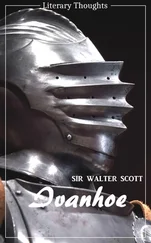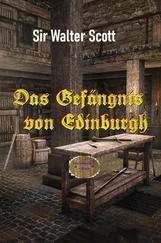line 327. ‘The well-known Gawain Douglas, Bishop of Dunkeld, son of Archibald Bell-the-Cat, Earl of Angus. He was author of a Scottish metrical version of the “AEneid,” and of many other poetical pieces of great merit. He had not at this period attained the mitre.’-SCOTT.
A word of caution is necessary as to the ‘many pieces’ mentioned here. Besides his ‘AEneid, ‘ Douglas’s extant works are ‘Palice of Honour,’ ‘King Hart,’ and a poem of four stanzas entitled ‘Conscience.’ To each book of the ‘AEneid,’ however, as well as to the supplementary thirteenth book of Maphaeus Vegius, which he also translates, he prefixes an introductory poem, so that there is a sense in which it is correct to call him the author of ‘many pieces.’ His works were first published in complete form in 1874, in four volumes, admirably edited by the late Dr. John Small. See ‘Dict. of Nat. Biog.’
line 329. Rocquet, a linen surplice.
line 344, ‘Angus had strength and personal activity corresponding to his courage. Spens of Kilspindie, a favourite of James IV, having spoken of him lightly, the Earl met him while hawking, and, compelling him to single combat, at one blow cut asunder his thigh-bone, and killed him on the spot. But ere he could obtain James’s pardon for this slaughter, Angus was obliged to yield his castle of Hermitage, in exchange for that of Bothwell, which was some diminution to the family greatness. The sword with which he struck so remarkable a blow, was presented by his descendant, James Earl of Morton, afterwards Regent of Scotland, to Lord Lindesay of the Byres, when he defied Bothwell to single combat on Carberry-hill. See Introduction to the Minstrelsy of the Scottish Border ’-SCOTT.
Stanza XII. line 379. With the use of fall= befall cp. Antony and Cleopatra, iii. 7. 38:-
‘No disgrace
Shall fall you for refusing him at sea.’
Stanza XIV. line. Saint Brideis Saint Bridget of Ireland, who became popular in England and Scotland under the abbreviated form of her name. She was ‘a favourite saint of the house of Douglas, and of the Earl of Angus in particular.’ See note to Clarendon Press ‘Lay of Last Minstrel,’ VI. 469.
line 437. ‘This ebullition of violence in the potent Earl of Angus is not without its example in the real history of the house of Douglas, whose chieftains possessed the ferocity, with the heroic virtues, of a savage state. The most curious instance occurred in the case of Maclellan, Tutor of Bombay, who, having refused to acknowledge the pre-eminence claimed by Douglas over the gentlemen and Barons of Galloway, was seized and imprisoned by the Earl, in his castle of the Thrieve, on the borders of Kirkcudbrightshire. Sir Patrick Gray, commander of King James the Second’s guard, was uncle to the Tutor of Bombay, and obtained from the King a “sweet letter of supplication,” praying the Earl to deliver his prisoner into Gray’s hand. When Sir Patrick arrived at the castle, he was received with all the honour due to a favourite servant of the King’s household; but while he was at dinner, the Earl, who suspected his errand, caused his prisoner to be led forth and beheaded. After dinner, Sir Patrick presented the King’s letter to the Earl, who received it with great affectation of reverence; “and took him by the hand, and led him forth to the green, where the gentleman was lying dead, and showed him the manner, and said, ‘Sir Patrick, you are come a little too late; yonder is your sister’s son lying, but he wants the head; take his body, and do with it what you will.’-Sir Patrick answered again with a sore heart, and said, ‘My lord, if ye have taken from him his head, dispone upon the body as ye please;’ and with that called for his horse, and leaped thereon; and when he was on horseback, he said to the Earl on this manner: ‘My Lord, if I live, you shall be rewarded for your labours, that you have used at this time, according to your demerits.’
‘“At this saying the Earl was highly offended, and cried for horse. Sir Patrick, seeing the Earl’s fury, spurred his horse, but he was chased near Edinburgh ere they left him; and had it not been his led horse was so tried and good, he had been taken.”‘-PITSCOTTIE’S History , p. 39.’-SCOTT.
Stanza XV. line 456. Cp. above, III. 429, and see As You Like It, i. 2. 222: ‘Hercules be thy speed!’ The short epistle of St. Jude is uncompromising in its condemnation of those who have fallen from their faith-who have forgotten, so to speak, their vows of true knighthood. It closes with the beautiful ascription-‘To Him that is able to keep you from falling, and to present you faultless before the presence of His glory with exceeding joy.’ There is deep significance, therefore, in this appeal of the venerable and outraged knight for the protection of St. Jude.
line 457. ‘Lest the reader should partake of the Earl’s astonishment, and consider the crime as inconsistent with the manners of the period, I have to remind him of the numerous forgeries (partly executed by a female assistant) devised by Robert of Artois, to forward his suit against the Countess Matilda; which, being detected, occasioned his flight into England, and proved the remote cause of Edward the Third’s memorable wars in France. John Harding, also, was expressly hired by Edward IV to forge such documents as might appear to establish the claim of fealty asserted over Scotland by the English monarchs.’-SCOTT.
line 458. It likeswas long used impersonally, in the sense of it pleases. Cp. King John, ii. 2. 234: ‘It likes us well.’
line 460. St. Bothan, Bythen, or Bethan is said to have been a cousin of St. Columba and his successor at Iona. His name is preserved in the Berwickshire parish, Abbey-Saint-Bathan’s; where, towards the close of the twelfth century, a Cistertian nunnery, with the title of a priory, was dedicated to him by Ada, daughter of William the Lion. There is no remaining trace of this structure.
line 461. The other sons could at least sign their names. Their signatures are reproduced in facsimile in ‘The Douglas Book’ by Sir William Eraser, 4 vols. 4to, Edin. 1886 (privately printed).
line 468. Fairly, well, elegantly, as in Chaucer’s Prol. 94:-
‘Well cowde he sitte on hors, and faire ryde’;
and in ‘Faerie Queene,’ I. i. 8:-
‘Full jolly knight he seemed, and faire did sitt.’
Stanza XVI. line 498. This line is a comprehensive description of a perfectly satisfactory charger or hunter.
line 499. Sholtois one of the Douglas family names. One of the Earl’s sons, being sheriff, could not go with his brothers to the war.
line 500. ‘His eldest son, the Master of Angus.’-SCOTT.
Stanza XVII. line 532. In Bacon’s ingenious essay, ‘Of Simulation and Dissimulation,’ he states these as the three disadvantages of the qualities:-’The first, that Simulation and Dissimulation commonly carry with them a show of fearfulness, which, in any business, doth spoil the feathers of round flying up to the mark. The second, that it puzzleth and perplexeth the conceits of many, that would otherwise co-operate with him, and makes a man almost alone to his own ends. The third, and greatest, is that it depriveth a man of one of the most principal instruments for action; which is trust and belief.’
Stanza XVIII. line 540. ‘This was a Cistertian house of religion, now almost entirely demolished. Lennel House is now the residence of my venerable friend, Patrick Brydone, Esquire, so well known in the literary world. {4} It is situated near Coldstream, almost opposite Cornhill, and consequently very near to Flodden Field.’-SCOTT.
Читать дальше






